History
On April 25, 1912, on a prominent hill on the undeveloped campus of the Carnegie Institute of Technology, a cornerstone was put in place for a new building. Designed in a Beaux-Arts style by famed architect Henry Hornbostel, the building was destined to be the eastern anchor of a quadrangle of academic buildings. It was designated the College of Fine Arts.
In what would become a characteristic of all future College of Fine Arts inhabitants, the students of the day didn’t let the cornerstone-laying for their new building go unheralded. A grand pageant was arranged, and judging by the surviving photographs of the event, the young marchers were resplendent in costumes that corresponded to different periods of art. They were also effusive in their praise of their new home, and overflowing with hope for the future:
Well may we hold a pageant to herald our new building, the home of art instruction in this smoky city. Nay, even more! The citadel of art for miles around…Aye, splendid it was in every sense of the word. Not a temporary thing, of limited duration, but to last for all eternity. Hereafter shall we hear it talked of resurrected when all other show and tinsel are forgotten. Long live the memory of the pageant, and long life to the school that it presages.
That same year, the Carnegie Mellon University School of Music was inaugurated as a new department in the College. But at its birth pageantry was in short supply. From the 1913 yearbook, Thistle:
Immediately after Christmas, doleful, hideous and discordant sounds began to issue forth from certain part of the building, and upon investigation it was found that these sounds were proceeding from the new School of Music. This new department took us by surprise. We did not know they were coming until they were here. Although we are not acquainted with many of them, we are glad they are here...
Those doleful, discordant sounds were thankfully short-lived, replaced by sounds consonant and beautiful. Now, 100 years on, the School of Music has grown into a remarkable, vibrant place that is host to gifted musicians and wonderful teachers, with memorable performances aplenty.
1902-1911
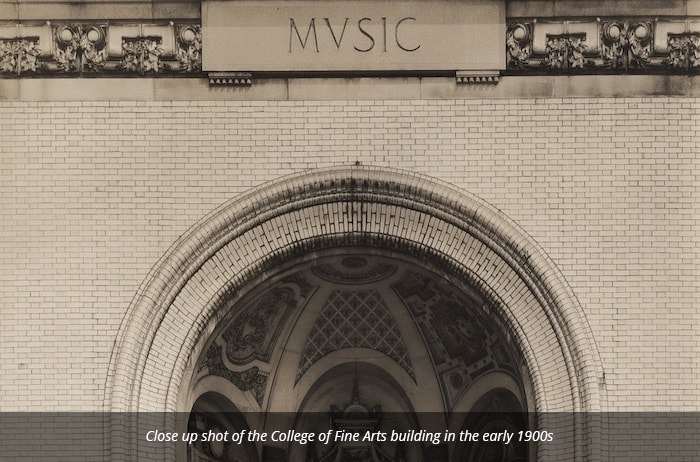
Carnegie Mellon University was founded in 1900 by industrialist and philanthropist Andrew Carnegie first as the Carnegie Technical Schools, renamed the Carnegie Institute of Technology in 1912, and after a merger with the Mellon Research Institute in 1968, Carnegie Mellon University.
Arthur A. Hamerschlag was the first President of the Carnegie Technical Schools and Carnegie Institute of Technology, serving from 1903 to 1922.
Music was a part of the University from its inception just as it was for Carnegie himself, who donated 7,689 organs to churches and municipalities, served as president of the New York Philharmonic society, and helped establish the Pittsburgh Symphony. Carnegie also supported the construction of concert halls, including New York’s renowned Carnegie Hall and Pittsburgh’s 2,000-seat Carnegie Music Hall, former home of the Pittsburgh Symphony Orchestra and now the main venue of the Carnegie Mellon Philharmonic.
Although instruction toward a degree began in the School of Music in the autumn of 1912, music has been part of the University since its first classes in 1905, when men’s and women’s glee clubs and a mandolin club were at the heart of student activities. To support the school football team in 1908, a seven-member band organized into what would become the Kiltie Band, performing in traditional Scottish kilts in honor of Andrew Carnegie. The Kiltie Band is said to be the first marching band to form moving letters on the football field at a half-time performance. From the Band’s inception until his passing in 1938, the Director of the Kiltie Band was E. F. Sullivan.
1912-1921
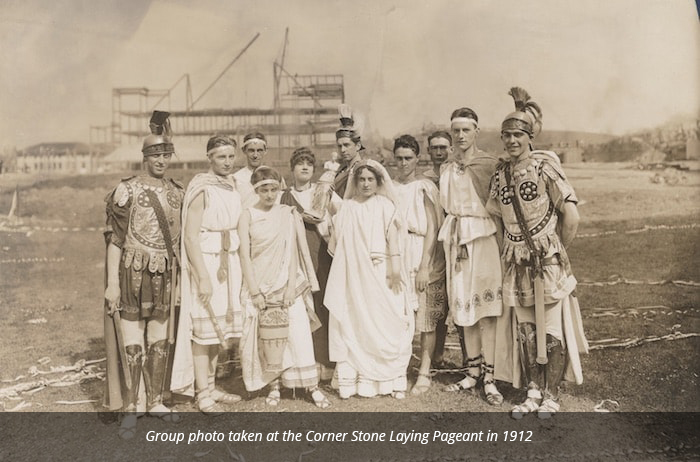
On April 25, 1912, the cornerstone was laid for a new building dedicated to the arts, a building with a magnificent Great Hall that would soon boast a ceiling fresco, inlaid marble floor, and classic statuary. The School of Applied Design (as the precursor of the College of Fine Arts was known) took up residence and became the first institution in the United States to offer degrees in all major art forms.
The 1913 edition of The Thistle began with a letter from President Arthur A. Hamerschlag:
“The most notable event of the year was the opening of the School of Applied Design. This new building has fulfilled the expectations of us all. Its every part bears the imprint of the love and genius of its architect and patron, Mr. Hornbostel. “
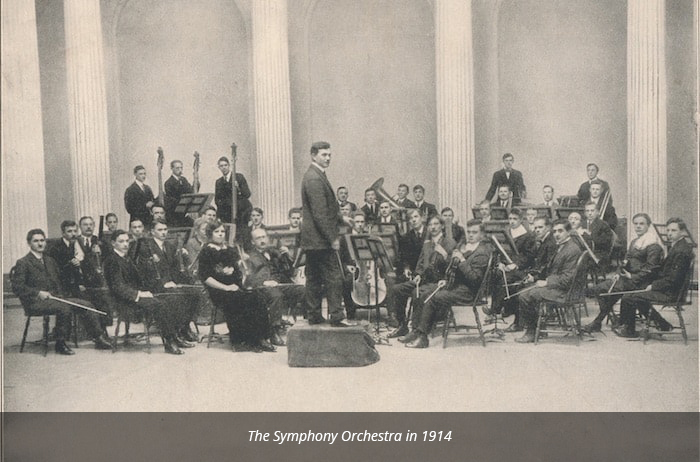
The ensembles in the new Department of Music included the Carnegie Orchestra, which boasted a total of 16 pieces, (Signor Gregorio Scalzo, Director), and The Carnegie Band (17 pieces), with the first head of the Department of Music, James Vick O’Brien, directing. Professor O’Brien also taught composition. Also listed among the music faculty of the Department of Music in its first year were Arthur G. Burgoyne (music history) and Karl Malcherck (violin). Arthur Burgoyne came to Pittsburgh from Ireland and became a prominent writer for local newspapers. He was called the “town poet” in his obituary in March 1914.
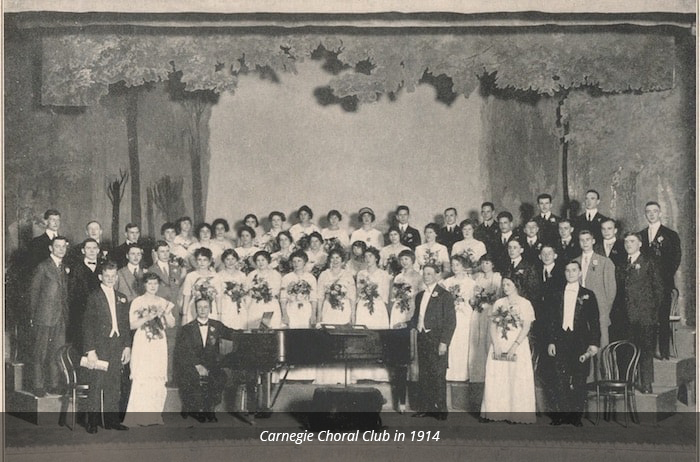
Carnegie himself visited the Carnegie Institute of Technology campus a total of five times, attending a concert by a sixty-piece student orchestra on his final visit in November 1914.
The School of Music was founded in part to train future members of the Pittsburgh Symphony Orchestra (PSO). Begun in 1895, the Symphony suspended operations between 1910 and 1926. Former members of the PSO joined the faculty and faculty later joined the reconstructed orchestra. Pittsburgh Symphony musicians have taught in studios at Carnegie Mellon University since the School’s beginning.
The School of Music graduated its first student, Hazel Inez Smail Benecke, in 1917.
The first Spring Carnival was instituted in May 1920 with the idea of stimulating alumni interest in the Institute:
“Clean-Up day, School Exhibition night, a bonfire on the athletic field, fraternity “open house,” an open air play, a band concert, a circus on the athletic field, and a dance in the foyer of the Fine Arts building were all part of this celebration.”
1922-1931
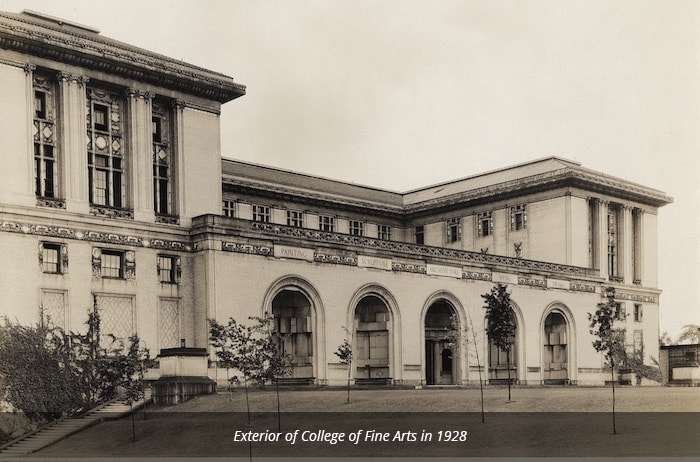
The School of Music launched an internationally celebrated eurhythmics curriculum in 1921. Two years of eurhythmics study became a requirement for all music students in 1931, integration with performance followed in 1943, and international workshops were later organized under the direction of Marta Sanchez. The School of Music’s Preparatory School pioneered music education for children in 1922, before similar instruction was offered at institutions such as Juilliard and New England Conservatory. The annual number of concerts nearly tripled at this time, from 13 in 1921 to 37 in 1922. Over its hundred-year history, the school has continued to grow in size, professionalism and activity, offering 60 concerts in 1953/54, 152 in 1988/89, and more than 250 in 2011/12.
1928 saw the chartering of the Carnegie Tech chapter of Phi Mu Alpha Sinfonia Fraternity (Alpha Omega chapter). Prior to this, men’s musical activities were sponsored almost entirely by a local honorary fraternity for music students known as the Clef Club. The Phi Mu Alpha chapter immediately held a song contest to “secure new college songs for Carnegie,” resulting in the composition of “The Skibo Song”. The vice-president of the Alpha Omega chapter in its first year was Paul W. Koch, who subsequently served for many years as the organist/choir director at St. Paul Cathedral in Pittsburgh.
In 1929, five female music students organized a music club at Carnegie Institute of Technology, which soon became a chapter of Sigma Alpha Iota (SAI) music sorority. The Alpha Mu Chapter, with an initial membership of fifteen, was installed at the college on May 16, 1930. SAI is still a vital and vibrant part of the Carnegie Mellon School of Music.
1932-1941
Adding to its existing programs in orchestral instruments and piano, the school established a vocal department in 1927 and a master’s program in music education in 1934. The student theater organization Scotch’n’Soda formed in 1937, and has served as the workshop for such successful Broadway musicals as Stephen Schwartz’s Pippin (1967).
Student ensembles were in such demand for events in Pittsburgh that in the late 1930s through the 1940s the school had to limit its service to the community in order to focus on its educational mission. The school remained relatively small compared to its peer institutions, in harmony with its emphasis on individual, conservatory-style instruction.
One of the most gifted students in the school’s history, legendary pianist Earl Wild, entered the Department of Music in 1933 and played in the first ever coast-to-coast live radio broadcast of a concert with the Carnegie Symphony Orchestra in 1936. Wild subsequently enjoyed immense success as a performing and recording artist and returned to Carnegie Mellon University as a faculty member in 1991.
Initiating a long tradition of diversity among the faculty and student body in the mid 1930s (years before many other institutions), the School of Music graduated its first black students, Lawrence W. Peeler and James Miller – who was one of jazz pianist Ahmad Jamal’s teachers and acknowledged “masters.”
On Eugene Ormandy’s recommendation, Frederic Dorian joined the Department of Music faculty in 1938. A founding member of Arnold Schoenberg’s Society for Private Performances, Dorian taught music history and succeeded O’Brien as the orchestra’s conductor. His advocacy contributed to the establishment of the National Endowment for the Arts in the United States.
The Great Depression gripped the world, yet a paragraph in the 1935 Thistle seems strangely current:
“The courage and spirit that the senior class of ’35 of the College of Fine Arts has shown during these past years are but a fraction of the courage and determination it will need from this point on, for it is going out to offer art and beauty to a world which is struggling for grim necessities.”
The music faculty that year included the Dean of the College, Glendenning Keeble (referred to as “Chairman of the Faculty”, and who taught History of Music and Aesthetics), and:
- Susan Trowbridge Canfield, Assistant Professor of Public School Music
- Joseph Charles Derdeyn, Instructor of Violoncello
- Selmar Janson, Associate Professor of Piano
- Huldah Jane Kenley, Assistant Professor of Public School Music
- Cecil Kitcat, Instructor in Dalcroze Eurhythmics
- Caspar Petrus Koch, Instructor in Piano and Organ
- Mildred Ethel Lawton, Curator, Department of Music
- Karl August Malcherek, Associate Professor of Violin
- James Vick O’Brien, Professor of Musical Composition and Conductor of Orchestra; Head of Department of Music
- Charles A. H. Pearson, Instructor in Music
- Theodore Rentz, Assistant Professor of Violin
- Henry Kloman Schmidt, Assistant Professor of Piano
- Jean Dagg Seaman, Associate Professor of Singing
Professor Malcherek also directed both the Men’s and Women’s Glee Clubs.
Upon the passing of founding director E. F. Sullivan in 1938, J. Vick O’Brien became the second Director of the Kiltie Band, a post he would hold until 1941, when the directorship passed to James Morrow.
1942-1951
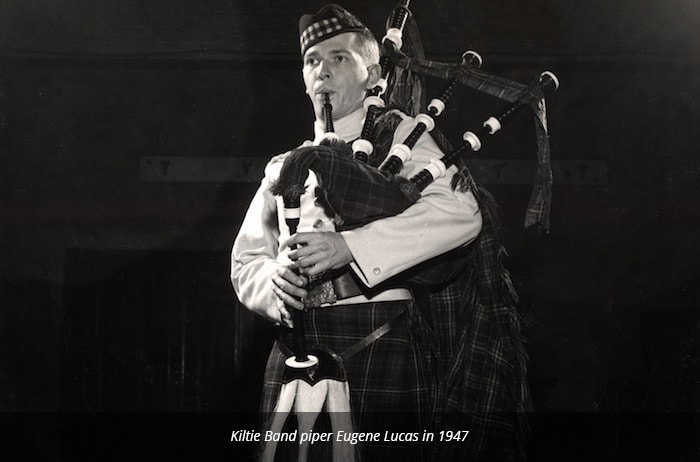
World War II had an enormous impact on every aspect of Carnegie Tech, and the Department of Music was not an exception. The flagship ensemble of the Department was the Kiltie Band, which during the war years was composed of civilians, soldiers, and women, but still decreased to almost half its former size. From the dedication to the 1944 edition of the Thistle:
“During this year just past, we who have been allowed to remain here at Tech could not help but notice that our nation is engaged in the most far-reaching conflict the world has yet known. It is true, the war has been going on for us since December 7, 1941; but not until now has it been brought to our attention so powerfully that life is not and cannot be what it has been. Enrollment has dropped to one half the former number; professors have answered the call to do whatever the government asks, and probably everyone has several friends in the service. It is to these brave friends and teachers, then, that we wish to dedicate this book; with the hope that some day not too far distant they may return again to the things they loved so well.”

The School of Music’s growth rekindled after the end of the war. By 1951 the Kiltie Band had recovered and was, according to the 1951 Thistle, “bigger and better than ever,” boasting 106 members. William A. Schaefer was the Band’s Director. The substantial presence of Oleta Benn, who joined the faculty in music education in 1945, helped provide a firm direction to the school in subsequent decades, especially where music education was concerned. Two students of Arthur Schnabel, Webster Aitken and Beveridge Webster, joined the piano faculty. The composer Nikolai Lopatnikoff, joining the faculty in 1945, expanded graduate offerings in composition.
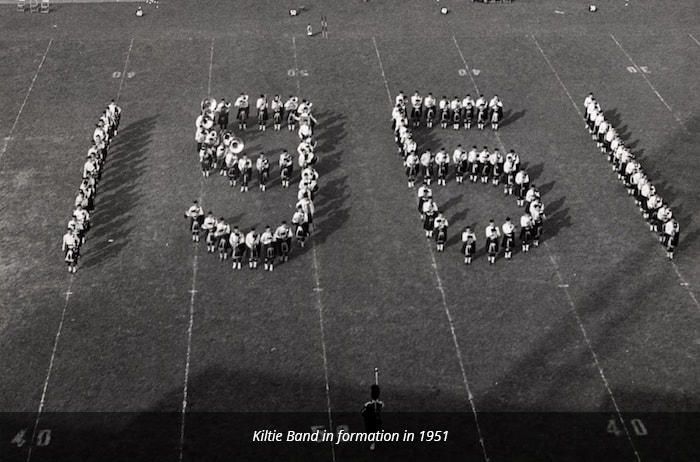
Starting in 1946, the school hosted numerous musicians with the International Society for Contemporary Music. Aaron Copland, Paul Hindemith, Francis Poulenc and various famous ensembles visited in the following years. Eventually these activities became known as the Composers’ Forum, under whose auspices Karlheinz Stockhausen, Pierre Boulez, and other internationally known composers came to campus.
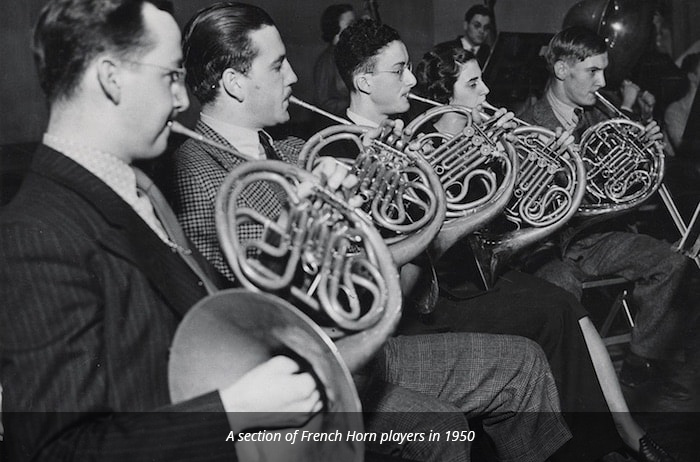
The Cameron Choir was founded in 1951 and quickly became a campus favorite. Charles A. Pearson was the Head of the Department of Music in 1950 and at that time there were four courses of study available: music education, composition, vocal performance, and instrumental performance.
Robert E. Doherty served as President of Carnegie Tech from 1936 until his death in 1950, whereupon John C. Warner was installed. Warner came to Tech in 1926 as an instructor of chemistry, and spent the war years working on the Manhattan Project.
In 1950 the Carnegie Institute of Technology celebrated the 50th anniversary of its founding.
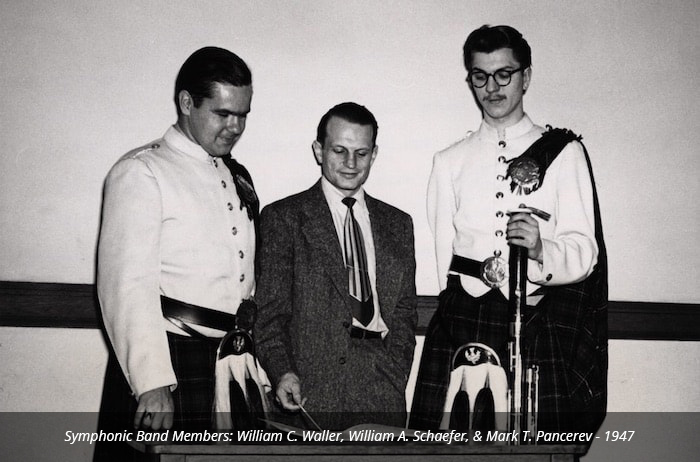
1952-1961
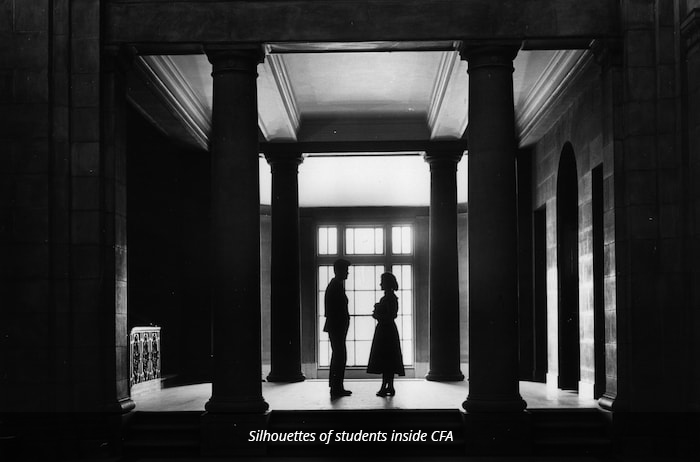
The 1954 Thistle remarked on Carnegie Tech’s long-term redevelopment program, including the razing of the “famous and traditional Carnegie Inn,” to make room for the new dormitory for men, Donner Hall.
That same year the popular Beaux Arts Ball expanded to a festival with three nights of activity. Among the presentations was a “Fugue for Woodwinds” by Joe Negri, who would become one of the great jazz guitarists of any era. Scotch‘n’Soda produced One in a Million, with Robert Bernat and Paul Conrad listed as Music Directors. Bernat would become chairperson of the Pennsylvania Council on the Arts and the founder and first music director of the River City Brass Band.
The Spring Carnival Formal dance featured Lionel Hampton’s Orchestra.
The Music Director of the Pittsburgh Symphony Orchestra, William Steinberg, was granted an honorary degree at the Baccalaureate ceremony at the Syria Mosque.
In 1958, the school launched an Opera Workshop and its series of endowed Andrew Mellon Professorships brought musical luminaries to campus.
1962-1971
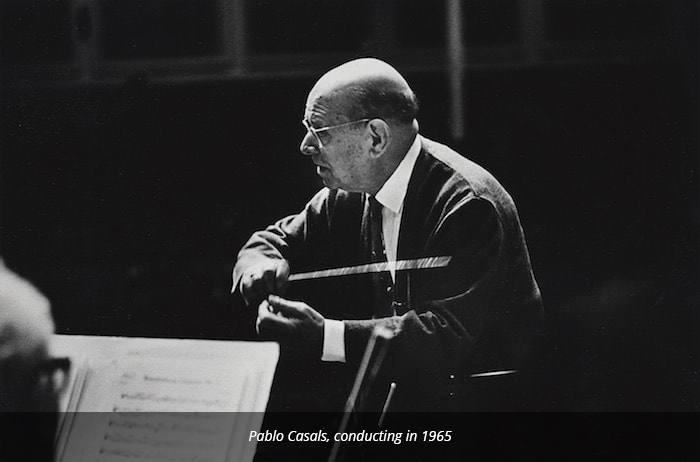
In 1965, Pablo Casals gave master classes and conducted performances of all of Bach’s six Brandenburg Concertos. The following year, the Pittsburgh Symphony Orchestra commissioned works from faculty composers Lopatnikoff and Roland Leich to help celebrate The City of Pittsburgh bicentennial.
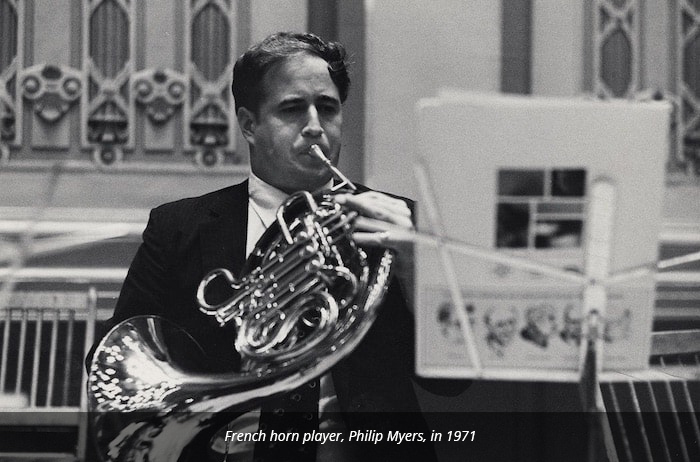
Former Chicago Symphony Orchestra concertmaster Sidney Harth became head of the School of Music in 1963, taking over directorship of the orchestra and founding the Carnegie Fine Arts Quartet.
In the mid 1960s, the Kiltie Band, the school’s foremost student ensemble, began a tradition of touring to New York to perform at Carnegie Hall, earning reviews in the New York Times, issuing recordings, and premiering works by leading composers.
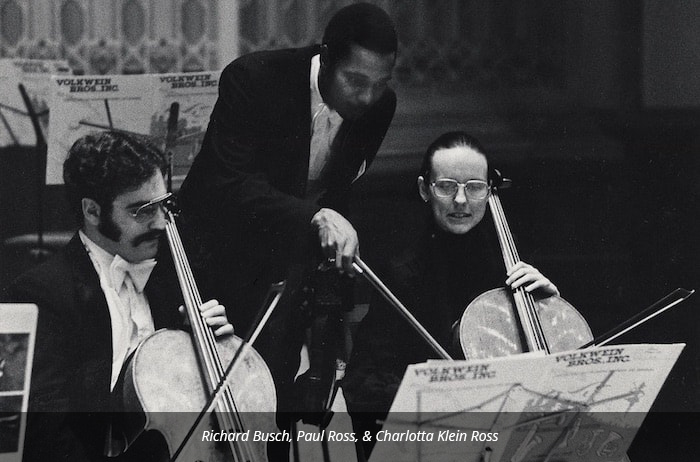
1972-1981
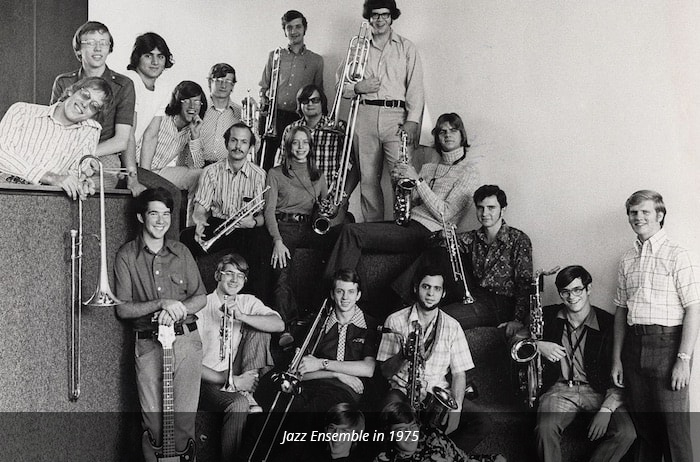
In the 1970s, Leonardo Balada replaced Lopatnikoff on the composition faculty and founded the Contemporary Music Ensemble.
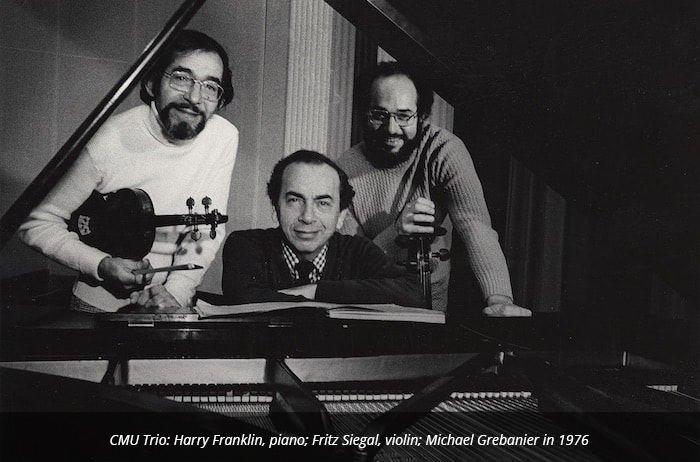
Robert Page, Director of Choruses and Assistant Conductor of the Cleveland Orchestra, became the Head of the Department of Music in 1975. The Department deepened its orientation toward performance with the establishment of a Baroque Ensemble and a program in Music Theatre (founded in collaboration with Larry Carra, the head of Department of Drama). An excerpt from the 1978 edition of the Thistle recounts the story:
“The dropping of music education from the curriculum of the Music Department caused much controversy. Robert Page, the Head of the Music Department announced the department needed more specialization and a choice had to be made between the performance option and the education option. The announcement was met with severe criticism from the students and a painted fence.“
Additionally, the Department of Music expanded from the College of Fine Arts Building into parts of the Margaret Morrison building in 1975. In November 1980, the Carnegie Mellon Philharmonic played the first of many concerts in Carnegie Hall, earning praise from the New York Times.
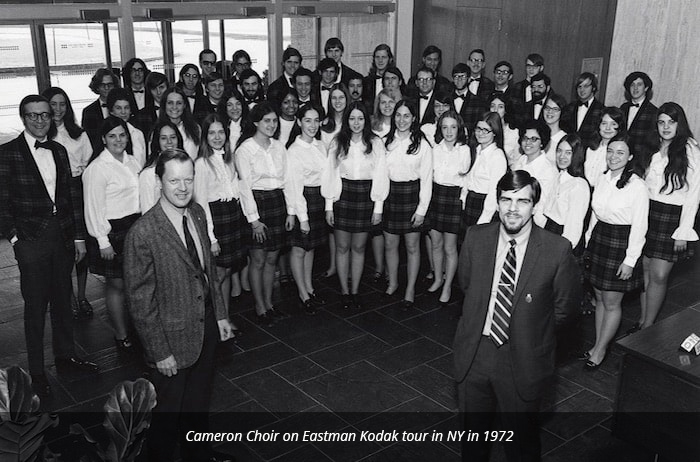
1982-1991
The Computer and Electronic Music Studio was founded in 1983 with Associate Professor Reza Vali as its director.
In 1987 the Cuarteto Latinoamericano arrived to begin a residency that was to last 20 years.
Pittsburgh Symphony Orchestra concertmaster Andrés Cárdenes joined the faculty in the late 1980s, a time when student-teacher relationships in the Department of Music were judged to be the best on campus.
Julius Baker, retired principal flute of the New York Philharmonic, joined the faculty in 1990. Later Jeanne Baxtresser, who succeeded Baker as principal flute of the New York Philharmonic, and Alberto Almarza established the studio as perhaps the most competitive flute program in the country.
Under the guidance of James McIntosh, the Department of Music created the first-ever major in bagpipe study in 1991.
In 1990, the Department first auditioned students in China when pianist Hanna Li and Department Head Marilyn Taft Thomas traveled on tour with the Pittsburgh Symphony Orchestra. Many of the school’s gifted graduate students have since come from Asian countries.
1992-Present
The Carnegie Mellon Department of Music became a School of Music under the leadership of Dr. Kenneth Keeling, Head of the School from 1996 – 2001.
The first long-distance, internet-based master class was conducted from the basement of the Carnegie Mellon Software Engineering Institute in 1996. This type of instruction is now routinely done from the recording studio in the College of Fine Arts.
In 2006 an innovative program called Repertory + Listening was established by Paul Johnston. This course exposes students to the large repertory of classical music through streamed audio.
In 2009, The School of Music created a highly selective undergraduate and master’s program in Music and Technology, in conjunction with the departments of Electrical and Computer Engineering and Computer Science at Carnegie Mellon.
In the 1980s, an advisory board ranked the School of Music among the top 25 nationwide - by 2010 it ranked among the top 10. Its success builds upon the world-class faculty from the Pittsburgh Symphony Orchestra, the world-class educational opportunities of Carnegie Mellon University, a history of innovative curricula and a culture of superior achievement.